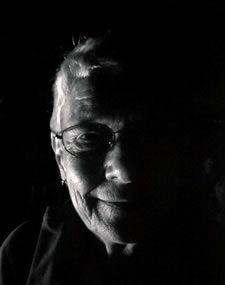 |
Dharma Gleaningsbycynthia rich
|

|
November 9, 2014—December 4, 2014
November 9, 2014
I’ve thought a lot, and talked with patients a lot, about grief and gratitude, and now it’s occurred to me what is happening as we hold onto our grief and as we learn to transform it into gratitude.
Persistent grief keeps us in the place of loss. Its voice repeats to us over and over, She isn’t here! She isn’t here! It pushes off, and with its insistent misery replaces, that immeasurable feeling that we had in our heart when we were together. It does not permit us to re-experience the deep happiness of that connection. Its emptiness extinguishes our beloved.
With gratitude, we feel how she lives on in our grateful heart. We relive the happiness and the love. We can feel flooded with that immeasurable feeling. Gratitude keeps our beloved alive.
November 15, 2014
A question we might ask: do I live my practice to make my life go better, or do I live my life to make my practice go better?
That is: Is our ultimate aspiration to be able to negotiate more comfortably and effectively in the conventional world? or is our ultimate aspiration to radically transform our way of being with the understanding that we may fit even less snugly with the way things are? Practice does indeed reduce our discomfort and suffering so that the conventional world is not so challenging in the old ways. However when we allow practice to radically transform our being, we are challenged in new ways and the conventional world can feel less and less like our true home.
Judgmentalism is not helpful, however when we participate in the conventional world, we begin to see that we are expected to join others in their as if lives—as if we won’t die, age, become ill—and to ignore the continual anxiety that such denial stirs below the surface. We begin to feel more alien from that world as we come to see that the engines that drive its everyday conventions are grasping and aversion and delusion.
How to be with this?
A teacher whose identity escapes me wrote: “Swim on the surface of the ocean and walk on the bottom of the ocean.”
November 28, 2014
A powerful aspect of the practice of loving kindness is that as we repeat, “May you be filled with loving kindness...may you be peaceful...,” we are reinforcing in ourselves the understanding that the “you” is a being capable of change. When we harden our hearts to someone it is our usually unconscious belief that they are intractable, fixed in the attributes that are problematic for us. The loving kindness chant not only makes more malleable the hard places in our own hearts, it can change our relation to the larger world as it becomes a repeated affirmation of everyone’s capacity for change.
December 4, 2014
As dedicated practitioners, we come to recognize more and more the hollowness and distress of those old constructed and constricted identities that we are so terrified of losing and discover the freedom and sweetness that comes from finding that our true home lies in our awareness.
In the early stages of our practice we begin by cultivating an awareness that behaves like a Rogerian therapist or like a good, nonjudgmental parent to a child. In meditation, we pull the child onto the parental lap of this awareness to hear what she has to say (“You’re feeling really sad.” “No, I’m not sad! I’m really terribly angry.”). As we go through our daily life, our awareness gently distracts her from what seems to her to be nourishment and what our practice has told us is harmful, just as we would when a toddler wants to put dirt into her mouth or, as she grows a bit older, wants to eat six teaspoons of sugar. With awareness we remind her that the lovely flower she wants to take home and keep forever will die, so that when it does she will not be so surprised and griefstricken. This stage of awareness, though wholesome and necessary, is egoic because it involves thought.
Then a time comes—we had better not expect instant enlightenment—when the child in us begins to incorporate those understandings of what is helpful to her and what is not and she starts to develop habits for herself, like right speech or non harming, that are more and more beneficial. She knows how to pay attention when she is becoming angry and remembers how to minister non judgmentally to that anger. Those understandings may take the form of “I should.” “These habits and ways of being have been helpful to me so I should...take the time to breathe/listen closely to my body/practice tonglen/tell the truth...”
At last a time comes when the Parent/the monitoring awareness is no longer necessary, because the child has now incorporated as natural to herself those habits, values and understandings necessary for her well being. They no longer need to be formulated. She is now an adult in her practice. (I have heard practitioners in their sixties declare, “Now I know what it really means to feel like an adult.”) She now moves through a conventional world guided by a wordless and formless awareness.
We might enumerate stages of the path:
1. The Buddha said I should...
2. I should...
3. I am and so I do/think/say...
LATER
Ajahn Tejania gives the beautiful—because accurate— comparison of this kind of late-stage awareness to the experience of driving a car. Driving is an apt image, because it is so fully conscious and yet so unconscious. I would add that when we first learn to drive, we are constantly noting: “there is a car on my left,” “there’s too little space from the car in front of me,” “I should start braking now.” This is exactly what we do when we begin an awareness practice. Gradually in our practice, the noting drops and we—just drive.